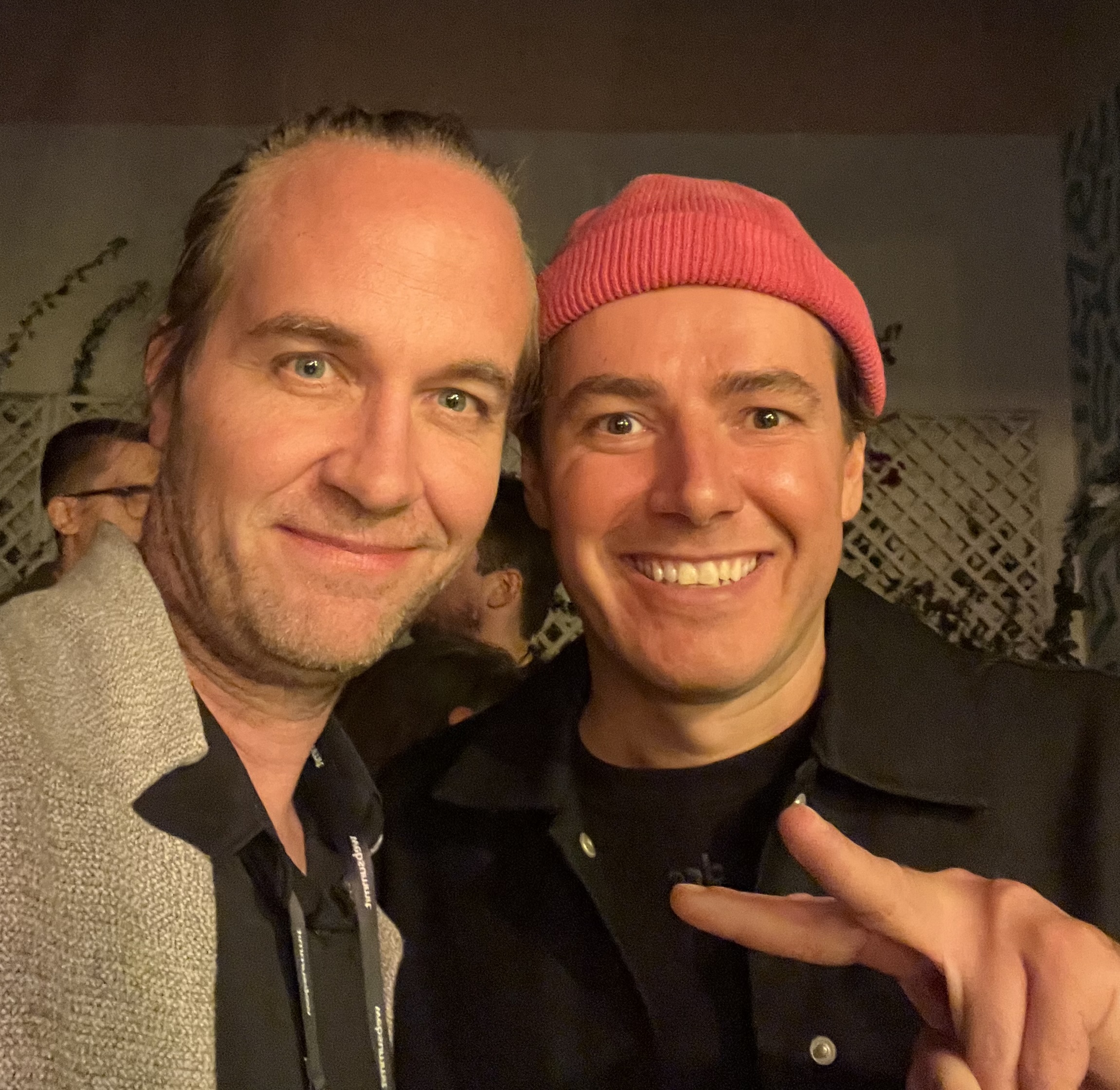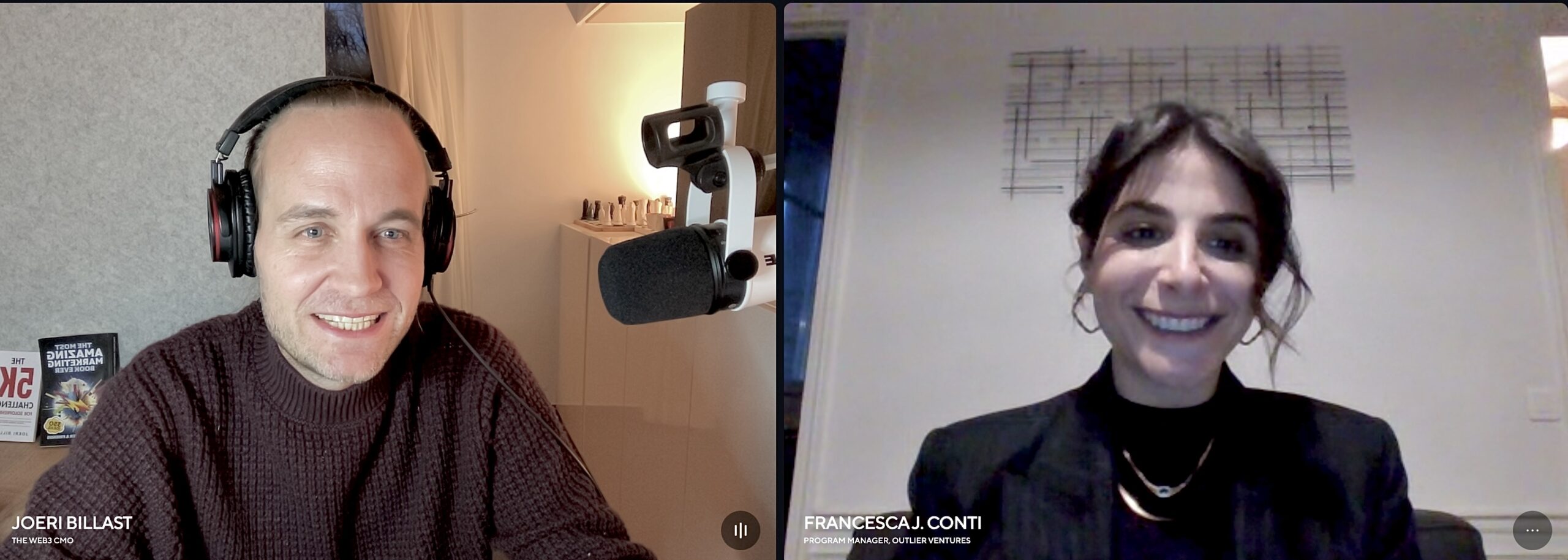This episode tackles the prevailing misconceptions surrounding Web3, emphasizing the need for a comprehensive rebranding to foster positive engagement. Diego Borgo shares insights on how the intersection of AI and blockchain can redefine this space, as well as the responsibility of industry leaders in shaping the future narrative.
• Discusses common misconceptions about Web3 and its association with scams
• Advocates for a rebranding of Web3 to enhance its perception
• Highlights the importance of clear communication to attract mainstream users
• Explores the potential of AI in verifying content authenticity through blockchain
• Examines how AI agents could simplify decentralized finance processes
• Calls for marketeers to actively engage in reshaping the narrative around Web3
Rebranding Web: Shifting Perceptions
During my recent podcast episode with Diego Borgo, it became clear that many misconceptions surround branding, particularly in the context of Web3. Many people still see branding as merely a logo or a catchy tagline, a narrow understanding that limits the potential impact of a brand. Diego highlighted that branding encompasses the entire experience a customer has with a product or service—it's about the emotions and perceptions that arise when someone interacts with a business. For instance, he mentioned how Apple has built a brand that evokes feelings of innovation and quality, which goes far beyond just the products themselves.
Effective communication plays a pivotal role in reshaping these misconceptions. Diego emphasized that it’s not enough to have a great product; brands must convey what they stand for and why it matters. Clear and consistent messaging helps establish trust and credibility. He pointed out that brands that engage with their audience through social media or community initiatives foster a deeper connection, encouraging customers to share their experiences and amplifying the brand's reach.
Diego also stressed the importance of leading by example in the branding landscape. He believes brands should embody the values they promote. If a company claims to prioritize sustainability, it should implement eco-friendly practices throughout its operations. He cited Patagonia as a powerful example, noting their commitment to environmental conservation through tangible actions that reinforce their brand message and attract a loyal customer base.
As we explored the nuances of branding, it became evident that standing out through meaningful branding is crucial in today's era of information overload. By addressing misconceptions, enhancing communication, and leading by example, brands can shift perceptions and create narratives that resonate deeply with their audience. Diego's insights reminded me that embracing these principles positions brands for long-term success in a competitive landscape.
The Importance of Communication in Branding
In our conversation, Diego reiterated that effective communication stands at the forefront of transforming perceptions. It’s not just about what brands say; it’s about how they say it and the channels they choose to engage their audience. He highlighted that presenting a brand's story clearly and authentically invites customers into a dialogue, building trust and fostering a sense of belonging. Diego used Nike as an example, showcasing how they leverage social media not just to promote products but to inspire conversations around empowerment and inclusivity.
Moreover, consistency in communication reinforces brand identity. Diego explained that maintaining a uniform voice across various platforms—whether it’s a website, social media, or customer service interactions—creates a cohesive experience for the audience. He pointed to Coca-Cola, noting their consistent messaging focused on themes of happiness and togetherness, which reinforces their brand image across generations.
We also touched on the power of storytelling. Diego emphasized that people connect with stories on an emotional level, and weaving brand values into compelling narratives captures attention and inspires action. He suggested sharing customer testimonials highlighting how a product or service has made a difference in their lives to humanize the brand and provide social proof that can influence potential customers. This approach creates a seamless experience that resonates with audiences.
Lastly, Diego pointed out the importance of feedback in communication. Actively seeking input from customers allows brands to adapt and improve offerings. By listening to their needs and concerns, brands show that they value their opinions, which builds loyalty. He cited Starbucks as a great example of a brand that often implements customer suggestions to enhance their services.
The Role of AI in the Future of Web
As we shifted our focus to the future of the web, I couldn't help but recognize the transformative role that AI will play. Diego, who has spent significant time working with AI and crypto companies, shared insights on how AI is not just a tool but is becoming integral to how we interact with digital spaces. He explained that AI algorithms can analyze user behavior, allowing brands to tailor their offerings in real-time. Imagine visiting a website that adjusts its content based on your preferences—this level of personalization enhances user experience, making it feel more intuitive and engaging.
Moreover, Diego pointed out the exciting opportunities presented by the combination of AI and blockchain. He noted that blockchain technology provides a secure, transparent way to verify transactions and ownership, while AI can streamline processes and enhance decision-making. Together, they can create a more trustworthy digital ecosystem. For example, in digital content, AI can help ensure creators receive fair compensation through smart contracts on the blockchain, allowing artists and writers to feel confident that their work is protected and that they will be rewarded fairly.
One significant aspect of this integration is proof of content. Diego highlighted how, as misinformation spreads rapidly online, establishing authenticity becomes crucial. AI can assist in verifying the credibility of content by analyzing various factors, such as the source, context, and engagement metrics. This capability not only helps users discern fact from fiction but also empowers brands to maintain their integrity. By leveraging AI for content verification, brands can foster a more reliable online environment where users feel safe engaging with information.
Furthermore, AI agents are set to revolutionize decentralized finance (DeFi). Diego explained how these intelligent agents can automate trading, lending, and investment strategies, making financial services more accessible to everyone. He painted a picture of a future where users could simply set parameters for their investments, and an AI agent would execute trades on their behalf based on real-time market analysis. This level of automation saves time and democratizes financial opportunities, allowing individuals to participate in the market without needing extensive expertise.
Navigating the Hype: Real Opportunities in Web
As our discussion evolved, Diego shared his thoughts on the hype cycle that often surrounds new technologies. He pointed out that this cycle typically begins with inflated expectations, where the buzz can overshadow practical applications. We’ve seen this happen with various innovations, but understanding the hype cycle helps approach emerging technologies with a balanced perspective, focusing on what truly adds value rather than getting swept away by the excitement.
Diego emphasized the need to identify practical applications. He explained that we should look for technologies that address real-world problems and enhance user experiences. For example, he discussed the rise of chatbots in customer service, highlighting how their ability to provide instant support and streamline communication exemplifies the real opportunities that can arise from technological advancements.
Moreover, Diego stressed the importance of leveraging technology for better services. He encouraged assessing how new tools fit into existing processes and improve them. By integrating AI analytics into marketing strategies, brands can understand customer behavior more effectively. This data-driven approach transforms the connection with audiences, making efforts more impactful.
Finally, we discussed the value of user feedback in navigating the hype. Diego underscored that actively seeking input from audiences enables brands to refine their approach and ensures that strategies align with user expectations. This feedback loop fosters a sense of community and trust, as customers feel their voices matter in shaping the services offered.
Taking Action: Steps for Marketers and Founders
In wrapping up our conversation, Diego shared actionable steps for marketers and founders to engage with the mainstream audience. He stressed the importance of understanding their needs and preferences, which can sometimes feel daunting. However, breaking down complex concepts into relatable terms is key. When presenting a product or service, highlighting its benefits in a way that resonates with everyday experiences can bridge the gap between technology and the audience.
Creating content that sparks interest and encourages participation is another essential step. Diego often leverages social media platforms to share stories, insights, and behind-the-scenes glimpses of brands. This transparency humanizes businesses and invites audiences to connect on a personal level. By sharing customer success stories, brands can foster a sense of community and make audiences feel part of something larger.
Furthermore, Diego emphasized the significance of building stronger brands in the web environment. Brands must maintain consistency across all messaging and branding efforts. When visuals, tone, and values align, a cohesive identity is created, instilling trust and recognition in audiences.
Utilizing data analytics effectively is also crucial for enhancing brand presence. Diego highlighted the need for analyzing user engagement and feedback to refine strategies and make informed decisions. This data-driven approach helps identify what resonates with audiences, allowing for more effective campaigns.
Lastly, embracing innovation and staying adaptable is vital for marketers and founders. The digital landscape is ever-changing, and being willing to pivot when necessary is key. By exploring new technologies and adjusting marketing strategies based on emerging trends, brands can seize new opportunities for growth.
Understanding the Need for a New Narrative in Web
Throughout our conversation, it became evident that there is a pressing need for a new narrative in the current landscape of the web. This narrative must address the concerns users have about safety and trust, particularly in light of the rise of scams and misinformation. Diego articulated how these issues shape public perception and create barriers to engagement. When users feel uncertain about the credibility of information or the integrity of brands, they hesitate to participate fully in the digital world. Therefore, crafting a narrative that emphasizes transparency and accountability is crucial.
One significant factor contributing to this perception is the impact of scams. Diego noted that these fraudulent activities harm individuals and tarnish the reputation of the entire online ecosystem. To counteract this trend, brands must actively promote a culture of authenticity and reliability. By showcasing genuine success stories and highlighting the steps taken to protect users, brands can help rebuild trust in the web.
To effectively communicate this new narrative, a shift from technical jargon to relatable language is essential. Many users feel overwhelmed by complex terminology, which can alienate them from engaging with technology. Diego advocated for breaking down concepts into simple, everyday language, making information more accessible and inviting users to feel comfortable and informed.
Creating a positive brand image for the web is another vital aspect of this new narrative. Brands should foster a sense of community and connection by demonstrating that they value the user experience. Consistency in messaging and visual identity plays a significant role in building this image. When users see a brand aligning its actions with its stated values, they are more likely to trust it.
Moreover, engaging audiences through storytelling is crucial. By sharing relatable experiences and highlighting how products or services have positively impacted lives, brands can create narratives that resonate. Diego emphasized that when users feel understood and their needs are met, they are more likely to engage and advocate for the brand.
Ultimately, as we work towards this new narrative, it requires ongoing effort and commitment. By addressing the impact of scams, simplifying communication, and building a positive brand image, we can contribute to a more trustworthy and engaging web environment. This shift not only benefits brands but enriches the overall digital experience for everyone involved.
Embracing the Future of Web
As I reflect on the evolution of the web, I see a landscape rich with opportunities and challenges. The insights shared by Diego highlight the importance of adaptability, innovation, and user-centric strategies. These elements will shape the future of digital interactions and define how brands connect with their audiences.
To implement these insights practically, brands can actively seek out emerging technologies that align with their vision. By incorporating augmented reality (AR) into marketing efforts, brands can engage users in fresh and relevant ways, driving deeper connections. Additionally, leveraging data analytics allows for a better understanding of user behaviors, enabling brands to tailor offerings to meet evolving needs.
Fostering a culture of collaboration within organizations is also key. By encouraging teams to share ideas and insights, creativity and innovation can flourish. This collaborative spirit can extend beyond teams to include partnerships with industry leaders, enhancing brand credibility and reach. When brands align with others who share their values, they amplify their message and create a more significant impact.
Moreover, continuous learning is necessary for success. Investing in training programs for teams ensures they stay informed about the latest trends and best practices. This commitment to growth translates into better service for users and positions brands as leaders in the space. Empower employees to drive innovation and contribute to a positive user experience.
Ultimately, as brands embrace the future of the web, they must focus on creating a trustworthy and engaging environment for their audience. By prioritizing transparency, simplifying complex concepts, and encouraging open dialogue, brands can foster a community that feels valued and understood. This approach enhances user satisfaction and strengthens brand reputation in an ever-evolving digital landscape.

Joeri Billast and Diego Borgo at WebSummit 2024
KEY HIGHLIGHTS
[01:06] What’s the biggest misconception about Web3 that still persists, and why?
[04:18] If you were to rebrand Web3 from scratch, what core narrative would you build around it?
[09:54] AI has been dominating the conversation for a while now. Where does that leave Web3, and should it adapt? What are your thoughts?
[11:41] Many Web3 experts are now rebranding themselves as AI experts, shifting their focus. How do you see this trend, especially with projects like DeepSeek?
[22:53] I missed your talk in Belgium but saw your blog, They Lied to You About Web3. What was it about, and how did people react?
[28:22] For those listening, where can they follow you or find out about your next talks?
NOTABLE QUOTES
“I'm calling for a rebrand of Web3, because the mainstream perception is mostly related to scams and failures.”
“The industry was built by technologists for technologists, and we expect everyone to understand our tech talk, but they don't.”
“We keep presenting Web3 as the Wild West, and nobody wants to be in the Wild West.”
“Tech is not a differentiation point; it's an equalizer.”
“If we are in web three building the new Internet, we're not winning.”
MENTIONED RESOURCES
CONNECT
LinkedIn: https://www.linkedin.com/in/diegoborgo/






